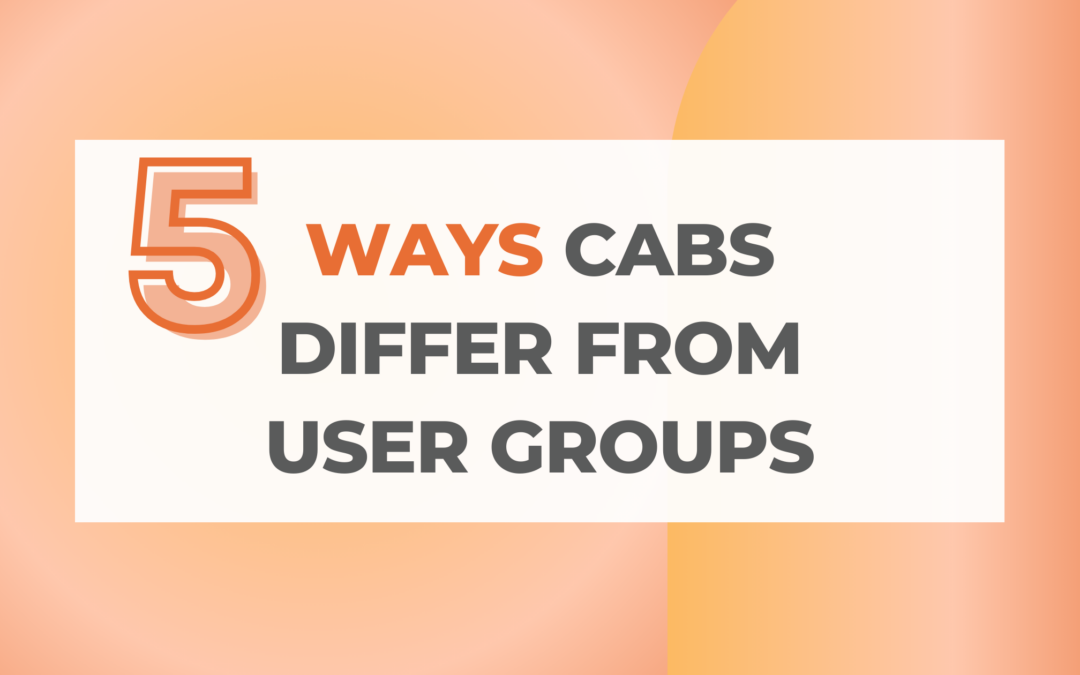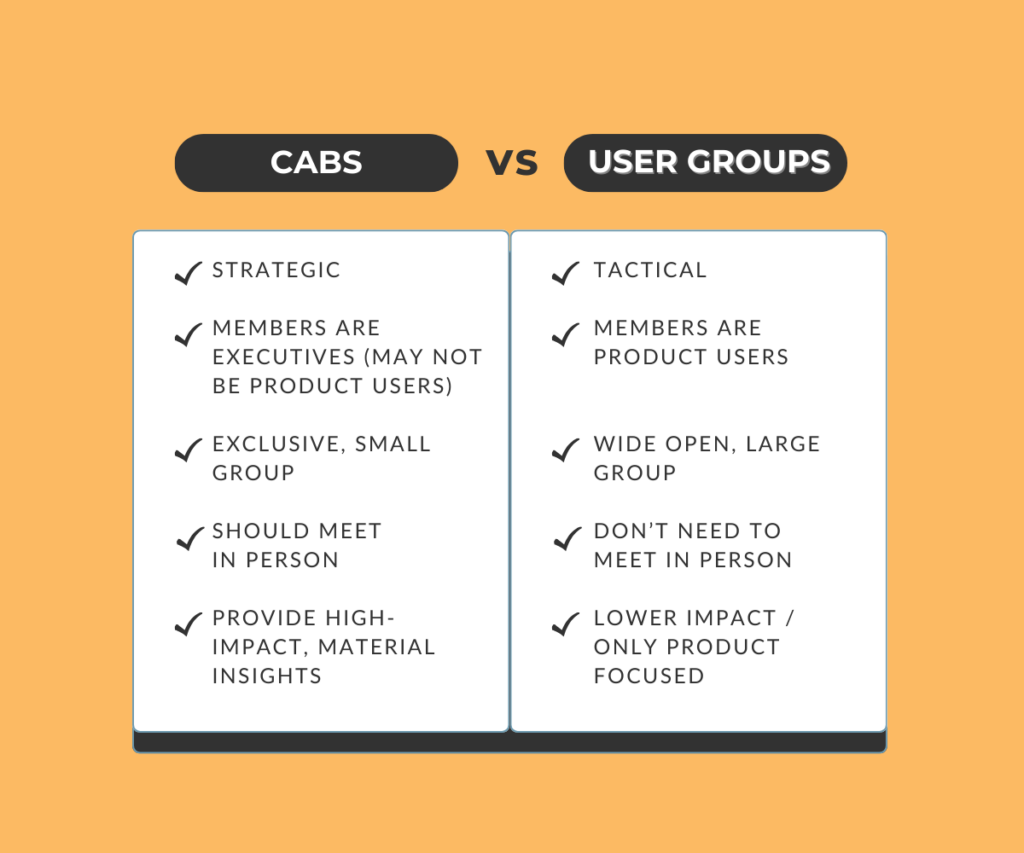Sometimes during our webinars we are asked where user groups stand in relation to customer advisory boards (CABs). It can be understandable where perceived overlap may occur in the minds of marketers. The differences, as you might expect from our perspective, are quite significant.
Indeed, user groups can be part of an overall customer marketing or outreach program. Think of CABs and user groups as distinct, separate programs serving different customers and purposes. And they offer differing resulting benefits.
As such, here are five primary differences between CAB and user group initiatives:
1. CABs are strategic, user groups are tactical.
Strong customer advisory boards are established with a central theme. The theme or challenge impacts all CAB members. For example, mitigating IT security threats or improving financial operations.
CAB members provide insights to larger material challenges and strategic improvements. That customer insight could help their fellow CAB member colleagues and (especially) the host company.
User groups, on the other hand, are very focused around your company’s products. How can your products or solutions be improved or altered to address a very specific job or task?
2. CAB members are executives and may not be product users.
Members of your CAB are usually executives who have responsibility above and beyond your solutions’ realm of operations. As such, they see the “bigger picture” of how your and other solutions work together to meet a higher-level company challenge.
In fact, CAB members may not even be users of your solutions at all, which may fall to other, typically lower-level employees. In addition, such executives interact with executives from other company departments and disciplines. And as such, they have a wider knowledge about other areas within their companies that may be facing issues or insights, such as partnering or potential acquisition targets that users may simply not be aware of.
3. CABs are exclusive, user groups are wide open.
CAB programs are selective regarding who is invited to join. A formal nomination, vetting and invitation process should be in place to acquire the best members possible. As such, only a select number – typically around 16-18 members – is the goal of recruiting membership into one CAB.
User groups, on the other hand, are typically larger and open to anyone who has an interest in contributing feedback to a product. As such, some of the larger tech companies can have dozens or even hundreds of users in their user groups.
4. CABs should meet in person, user groups can be online.
CABs are exclusive gatherings of like-minded executives. And their meetings warrant meeting in-person at quality resorts over a couple of days. In addition to meeting topics – driven by the members themselves – meals and social activities enable more in-depth discussions that foster relationship building.
User groups, on the other hand, are usually able to hold their product discussions online via web meeting applications. Especially since screen shots and demos are likely the focus of discussion. Also, user groups can operate in the form of online groups that communicate mostly electronically. For example, posting users questions or tips – there’s no need for any personal interaction at all.
Finally, in a user group, the host company is usually doing about 90% of talking, demos, sharing and presenting. Whereas in a well-run CAB the balance changes completely, where the customers talk 80% of the time.
5. CABs provide high-impact, material insights, users groups is lower impact.
CAB meetings bring together executives in exclusive gatherings. And the CAB discussions, insights and suggestions can and do provide valuable and impactful ideas to the host company. Those CAB insights can lead to significant revenue opportunities and significant improvements, new products and services, partnership opportunities, competitive intelligence, acquisition targets and much more. Investments in strong, well-run CABs usually pay for themselves in a very short time. And they deliver customer loyalty and incremental marketing opportunities.
While user groups provide helpful insights to your product designs and feature roadmaps, they provide lesser value simply because their input is so product focused.
In Conclusion
User groups are helpful to a company when making marginal, tactical improvements to their existing products. But they should never be confused with strong CAB programs. Both can exist in an overall customer marketing program. Keep in mind that they serve different audiences and offer different levels of value to the host company. If you need help setting up your Customer Advisory Board program, let’s talk, schedule a CAB evaluation with an Ignite CAB expert.
Ignite Advisory Group is the leading global authority on Customer Advisory Boards and Customer-Led Boards. Ignite’s proven methodology for managing and evolving Customer Advisory Boards includes a 4-stage process, encompassing 48 deliverables and measured by 20 metrics to deliver a clear ROI. To learn more about Ignite, visit our website, read our blogs, and follow us on LinkedIn. To find out how your company can benefit from Ignite’s CAB methodology and process, contact us today.

